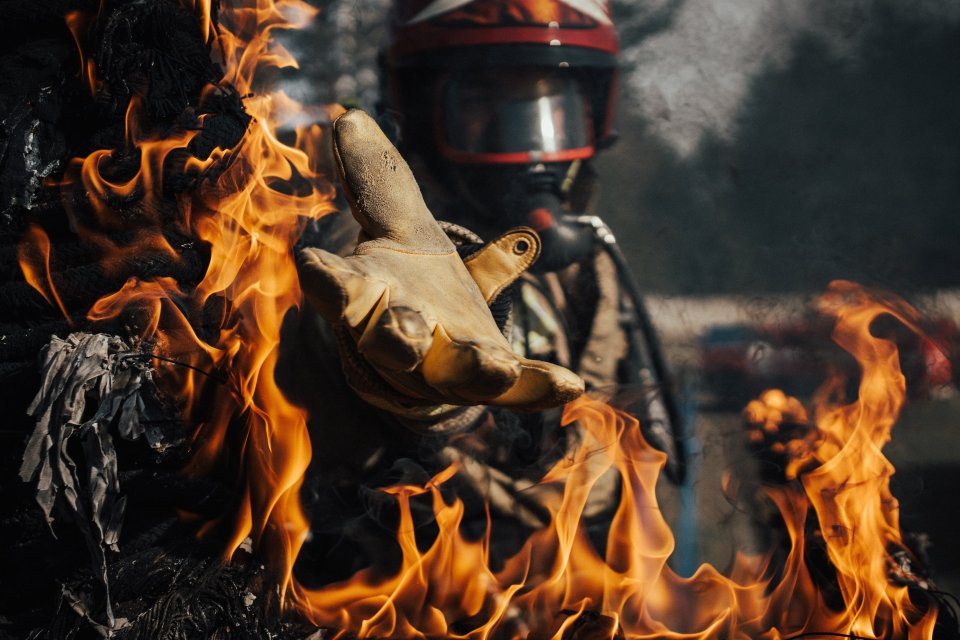
I was the master of a handy size bulker named M/V ELEVİT, in June 1996 when we were unloading our cargo of steel products in port of Hong Kong that we had loaded from Turkey.
It was the first time in my sea life that I came to Hong Kong.
Ships arriving in Hong Kong, as a rule, are moored to the buoys with their anchor chains due to the high risk of tropical storms in the region and only then can commence their cargo operations.
About one day before entering the port limits, the anchor is suspended by a mooring rope and then the anchor is seperated from the anchor chain by dismantling the connecting shackle (Kenter shackle) by melting the lead by heating which keeps the locking pin in place.
After that , a specially ordered D-Shackle is attached to the end of the anchor chain with which the vessel is moored to the buoy.
After the mooring maneuver, we started discharging our cargo to the barges that came alongside. Later on, sometime in the evening, as I was smoking my cigarette on the aft deck, I have noticed a fire started on a large container vessel in her bridge deck. The fire somehow took over the entire living quarters in no time. the fires of hell were gushing out as if from the mouth of an imaginary dragon,typical in eastern tales. The arrival of the fire tugs took a while, and as far as I can remember a considerable number of sailors lost their lives in this terrible fire.
I could never get this scene of hell out of my mind for the rest of my life that would keep haunting me like a relentless nightmare.
This incident made me compare the mandatory measures adopted against the risk of fire to minimize the loss of life both on land and at sea.
I was very much surprised to see that measures such as fire and escape ladders, which are obligatory especially in residences, workplaces, etc., above a certain height, has never been adopted at sea.
To give an example from Turkey, in accordance with the Regulation on Fire Protection of Buildings dated 19 December 2007, it is obligatory to have one fire stair in buildings between 21.5 meters and 30.5 meters in height, and two fire stairs in buildings with a height of 31.5-51 meters. If the height of the building is higher than 51.5 meters, it is obligatory to have at least two fire stairs. Matters related to the specification of materials and construction techniques to be used are explained in detail in the regulation. Undoubtedly, we know that there are similar and sometimes much more detailed mandatory rules for this particular emergency, especially in European countries and the USA. Although IMO has not brought a rule on this issue so far, can't an initiative be started at least? From my point of view, I think it's possible. Of course, expressing such an important issue with specific rules is beyond my area of expertise, as it is a very detailed subject that falls within the field of naval engineering and professional ship management, but as a seafarer, I consider it my duty to make some very basic suggestions on the basis of principle as listed below:
- The cabins in which the master, chief engineer, officers, engineers and all other personnel working on the ship stay should have windows that face forward / port/starboard side / or aft part of the vessel. Though this is not possible for tankers as the forward facing windows should be of fixed type and not allow gas and smoke to enter.
- For tankers, all cabins should at least partly face the sides or the aft of the vessel and cabins having only fixed type windows should not be allowed. The danger zones should be arranged accordingly at the design stage.
- At least one of the aforementioned window should be rectangular in shape and wide and long enough for an adult to pass through when opened. (See Figure -1 and Figure -2) The height of the lower edge of the rectangular window should be between 40-60 cm from the cabin floor.
.jpg)
Figure -1 Rectangular window – vertical type
- When the rectangular windows are opened ,there should not be any equipment or obstruction that will prevent the passage to the fire stairs.
- Fire escapes outside the living quarters must be of a nature to provide exit from at least two different ways to starboard and port.
.png)
Figure-2 Rectangular window inside the cabin
.png)
Figure-3 Accommodation without fire escape
.png)
Figure-4 Accommodation with fire escape & stairs
Note: I would like to thank my colleague, Maritime Pilot, Cpt.Renda Aslantaş, whose information I consulted in the section on tankers while writing this article.
Kind Regards

Comments ( 1 )